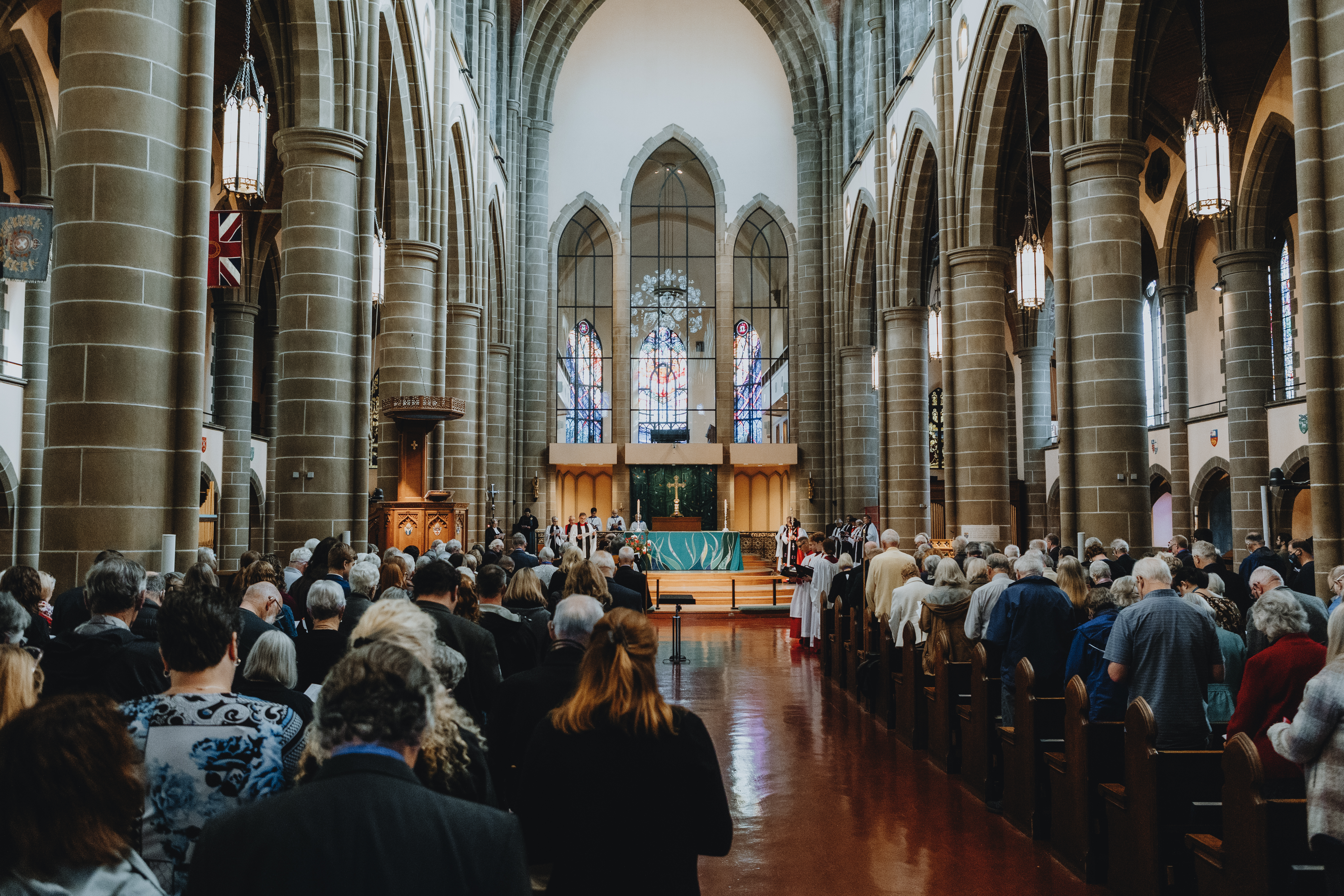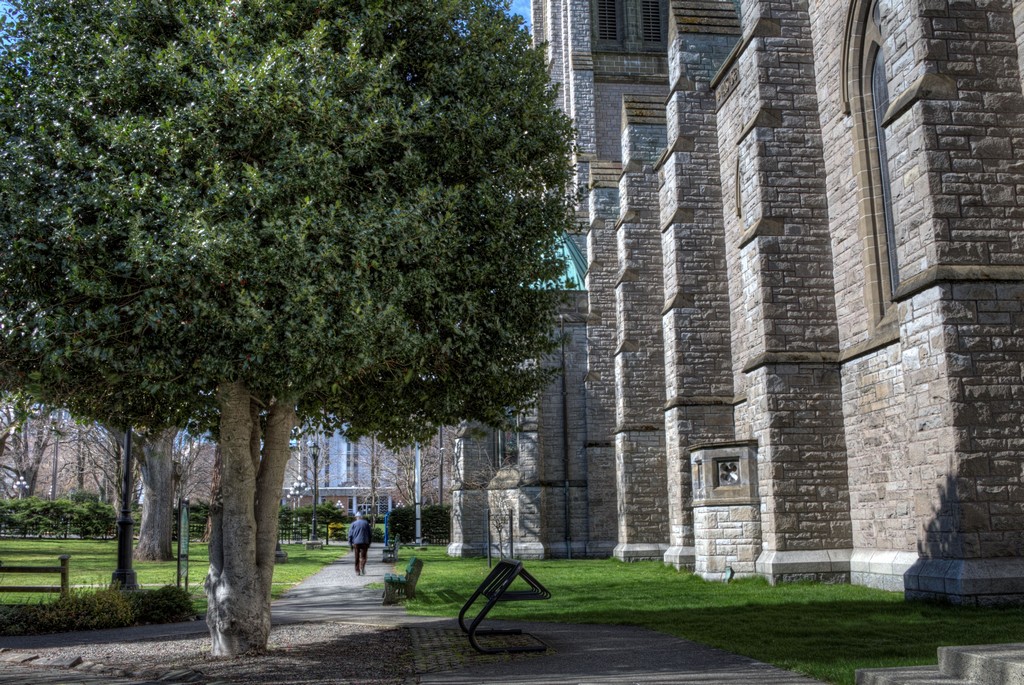For media inquiries, please contact media@bc.anglican.ca
Over the first half of 2025, the project team has been working with the City of Victoria to refine the Cathedral Commons rezoning application. After several iterations responding to City requests and recommendations, we believe that we are nearing a version of the masterplan that will be forwarded to City Council at a Fall 2025 Committee of the Whole meeting.
We look forward to sharing images of the plan once they are finalized.
Some key project data and features are listed below.
- Land Uses: Institutional, Community Amenity, Commercial, Residential
- Density and Massing: approximately 2.38 FSR
- Design Framework: Corresponding Design Guidelines that specify consistent quality, material, and principles throughout the masterplan
- Community Amenities: Enhanced existing amenities such as mature trees, heritage buildings, and cultural spaces, while adding new greenways, landscaping, and open spaces
- Phased Development: Established quadrants for gradual redevelopment over 25+ years, aligned with market conditions and community needs
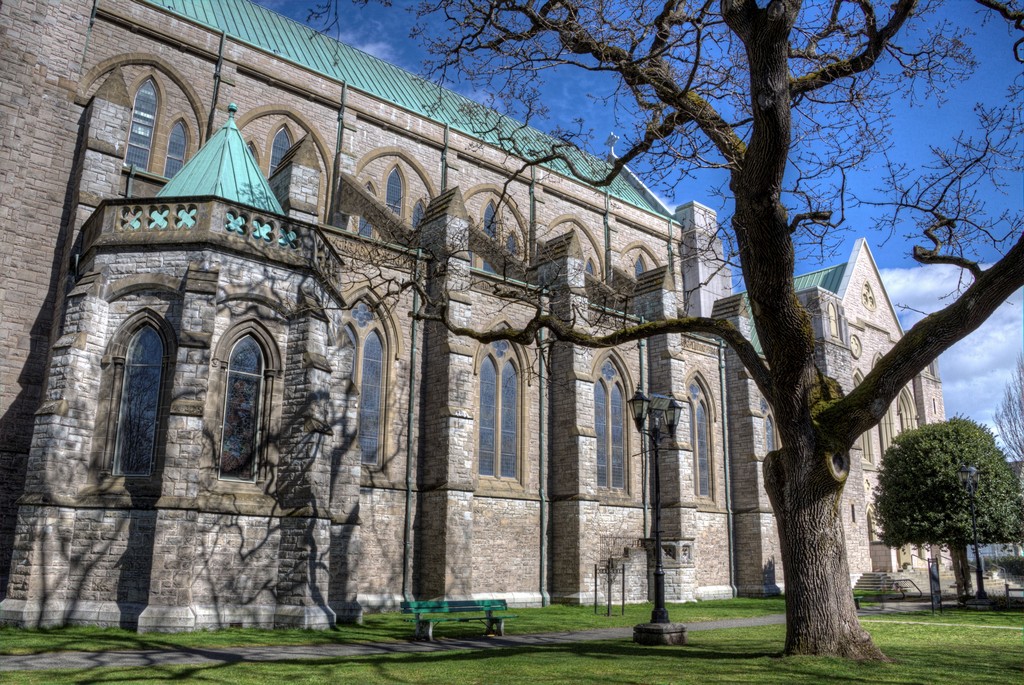
Located on the ancestral lands of the lək̓ʷəŋən poeple (Songhees and Esquimalt Nations) Christ Church Cathedral has been a centre for worship, music, arts, education and community for generations. In order to sustain and enhance these offerings, preserve the heritage buildings for the next generation, and contribute much-needed housing stock in our city, the diocese has submitted a rezoning application to the City of Victoria. This will be a multi-year multi-phased project . This page will be the landing place for information related to engagement opportunities, latest information and FAQ's. Please join us on this journey as we look to build for the future and enhance this site for years to come.
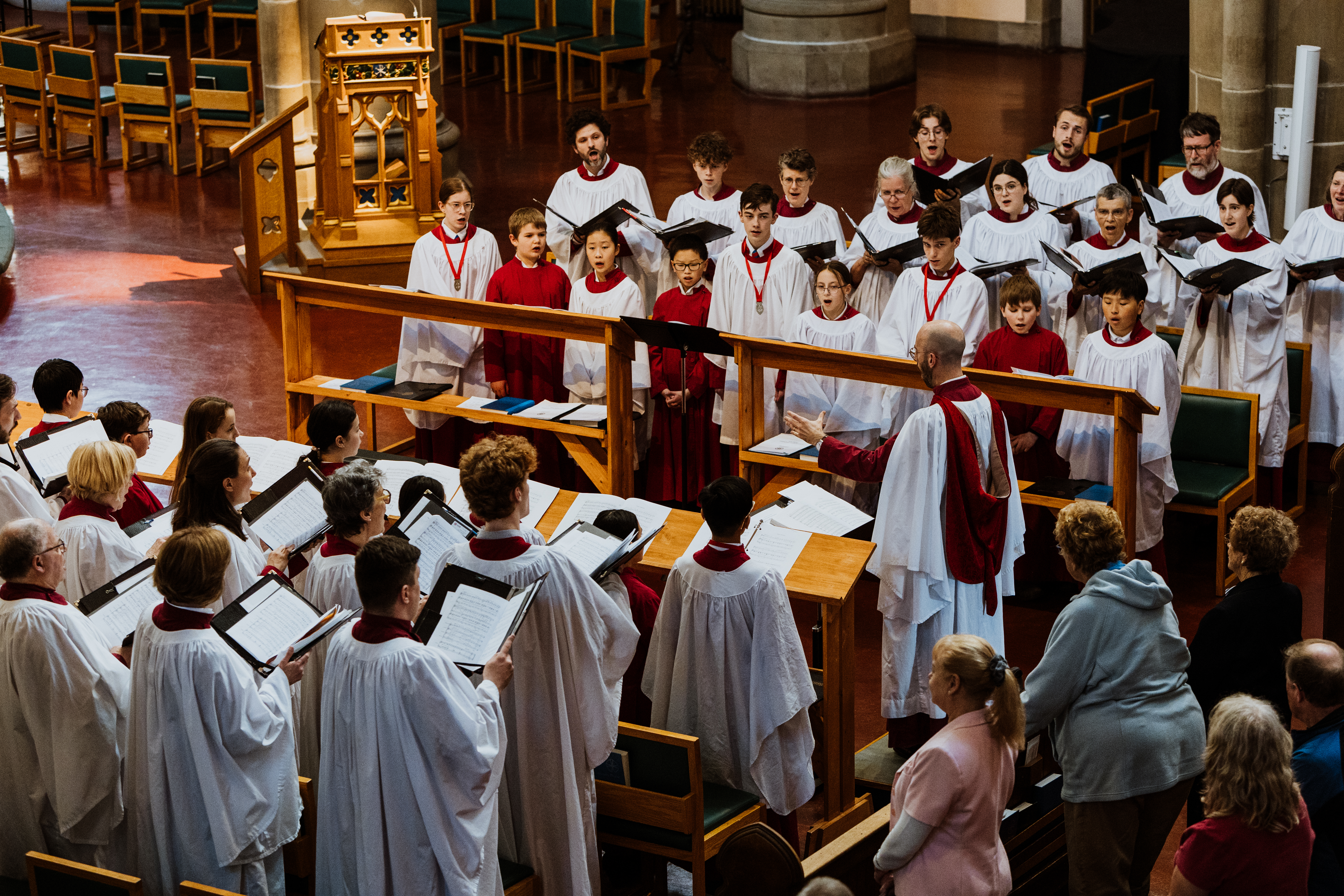
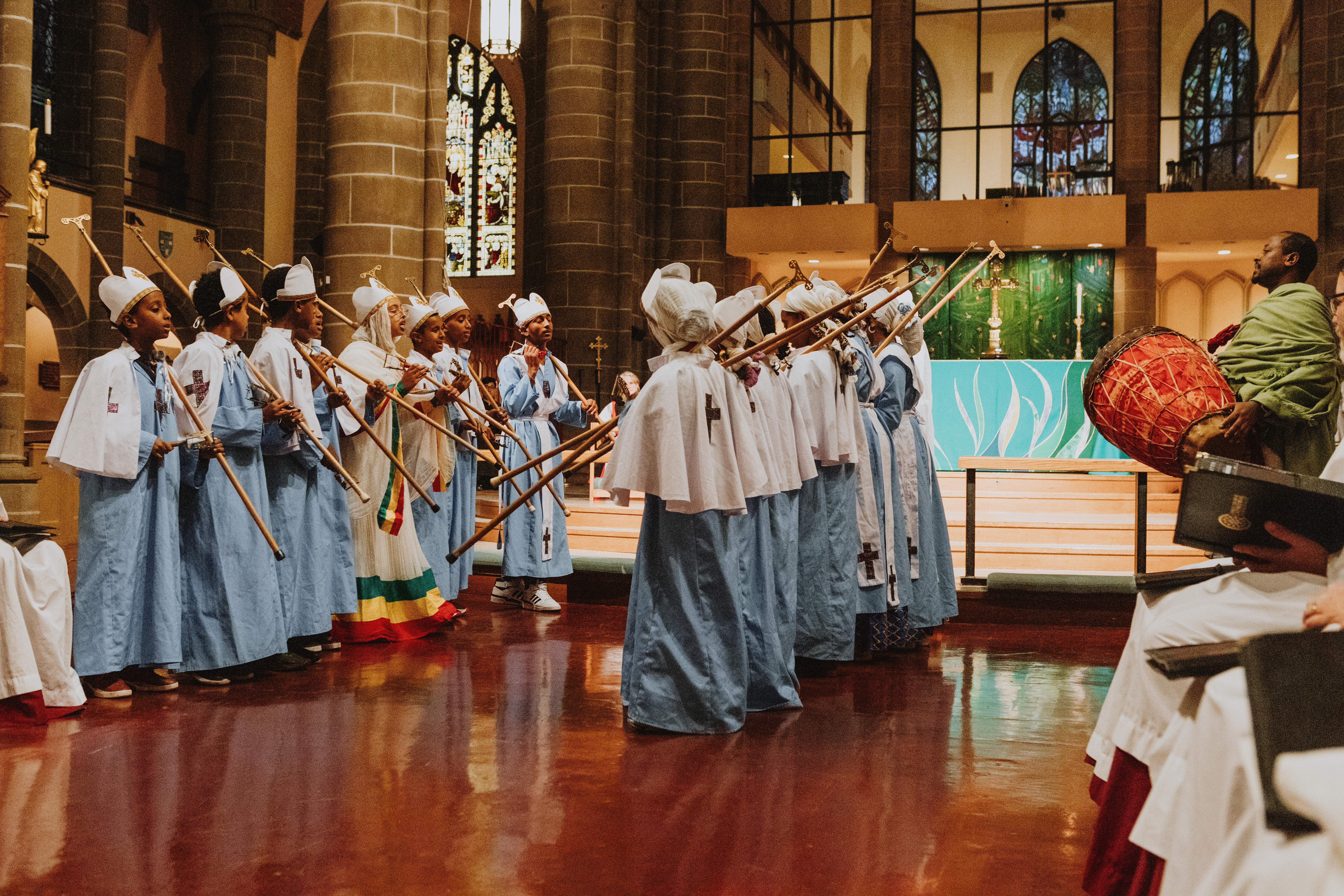
PROJECT OVERVIEW:
The residential, commercial and amenity opportunities imagined through this rezoning application aim to meet the current and future needs of the community, enhance Victoria’s cultural and heritage vitality, and further develop the Cathedral site as a crucial city landmark and community amenity. Most importantly, these new uses will allow for the preservation and enhancement of the City’s most prominent heritage building of worship for future generations. The Diocese is approaching this reality proactively by independently leading this submission without a private sector partner; this approach aims to ensure the plan remains grounded in community vision.
This proposal seeks to secure this site in community hands for the long term. The residential development opportunities proposed in the plan will increase the housing stock in the region and generate revenue to fund the phased heritage revitalization of the Cathedral, Memorial Hall, and Yarrow Chapel, as well as additional needed local and regional amenities. Recent structural assessments estimate that needed building fabric repairs and seismic upgrades to heritage buildings on the property may cost upwards of $50 million.
For over three years, the Diocese has been engaged in deep community conversations with internal and external stakeholders; and City staff. This proposed plan is the culmination of these conversations, alongside site due diligence, community and market research, non-profit and private sectors, and Indigenous community members.
The Diocese recognizes that the Precinct is in the territory of the lək̓ʷəŋən people known today as Esquimalt and Songhees Nations and that the site is part of the colonial settlement story of the region. In parallel to the City of Victoria rezoning process, the Diocese is committed to working with Esquimalt and Songhees Nations as this project proceeds to establish the south lawn as a site of reconciliation and spirituality.
In consultation with City Planning staff, this application proposes a zoning bylaw amendment for a Comprehensive Development (CD) zone and an Official Community Plan (OCP) amendment. This application does not include a development permit application because no buildings are being proposed at this point. To better understand the implications of the proposed zone, as well as the existing buildings and open space on site, the application includes conceptual designs to illustrate the potential that could result from a full build-out of the site, in compliance with the proposed CD Zone. Separate Development Permit Applications will be made for each quadrant and building development to follow.


.jpg)
BASIC FAQ's :
1. What kind of housing is being proposed?
There is no firm plan for what kind of housing program is proposed. At this stage we are asking for housing to be allowed. The type of housing will be determined prior to a development permit being sought.
The Anglican diocese has demonstrated a long-standing commitment to affordable seniors housing with many housing societies being established over many years. Dawson Heights Housing for example, is near completion of an 85 unit affordable housing apartments for people aged 55+.
There is also a project underway in collaboration with Duncan Housing Society and BC Housing at the parish of St. John the Baptist in downtown Duncan, to build 130 units of affordable housing for seniors and people with disabilities.
2. Will the green space on the site be lost?
Ensuring and enhancing the greenspace on the site is a priority for the proposed plan. The lawn on the southwest will remain, and there is a proposed North-South greenway connector between Rockland and Burdett connecting Pioneer Square to the south lawn. The plan also includes increasing the number of trees by 70% to contribute to the overall urban forest in the area.
3. Where will we park?
The proposal includes underground parking appropriate to the use of the site, which would be realized in phases as development happens over many years.
4. How did the diocese get this land?
The diocese was granted a significant parcel of land from the Hudson Bay Company in 1864, and the current site is a reminder of that grant. For a complete history of this acquisition CLICK HERE.
5. How long will this process take?
Please see timeline below.
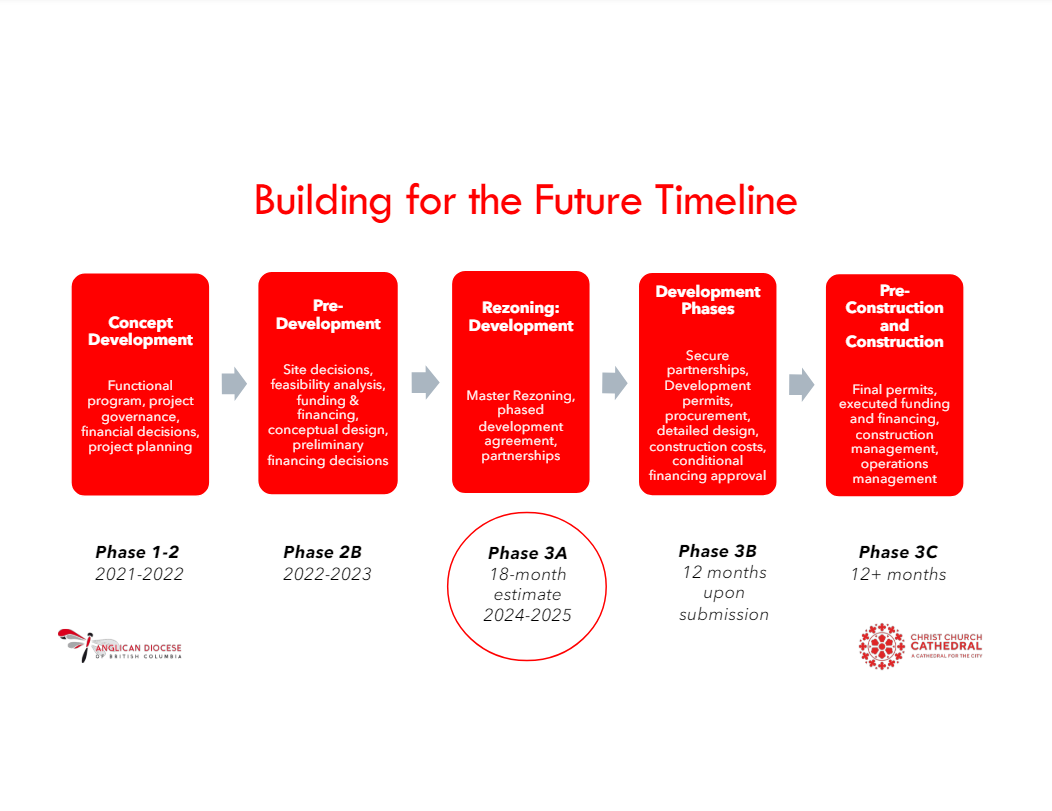
For media inquiries, please contact media@bc.anglican.ca
Photo Credit: J. Abram Photography
